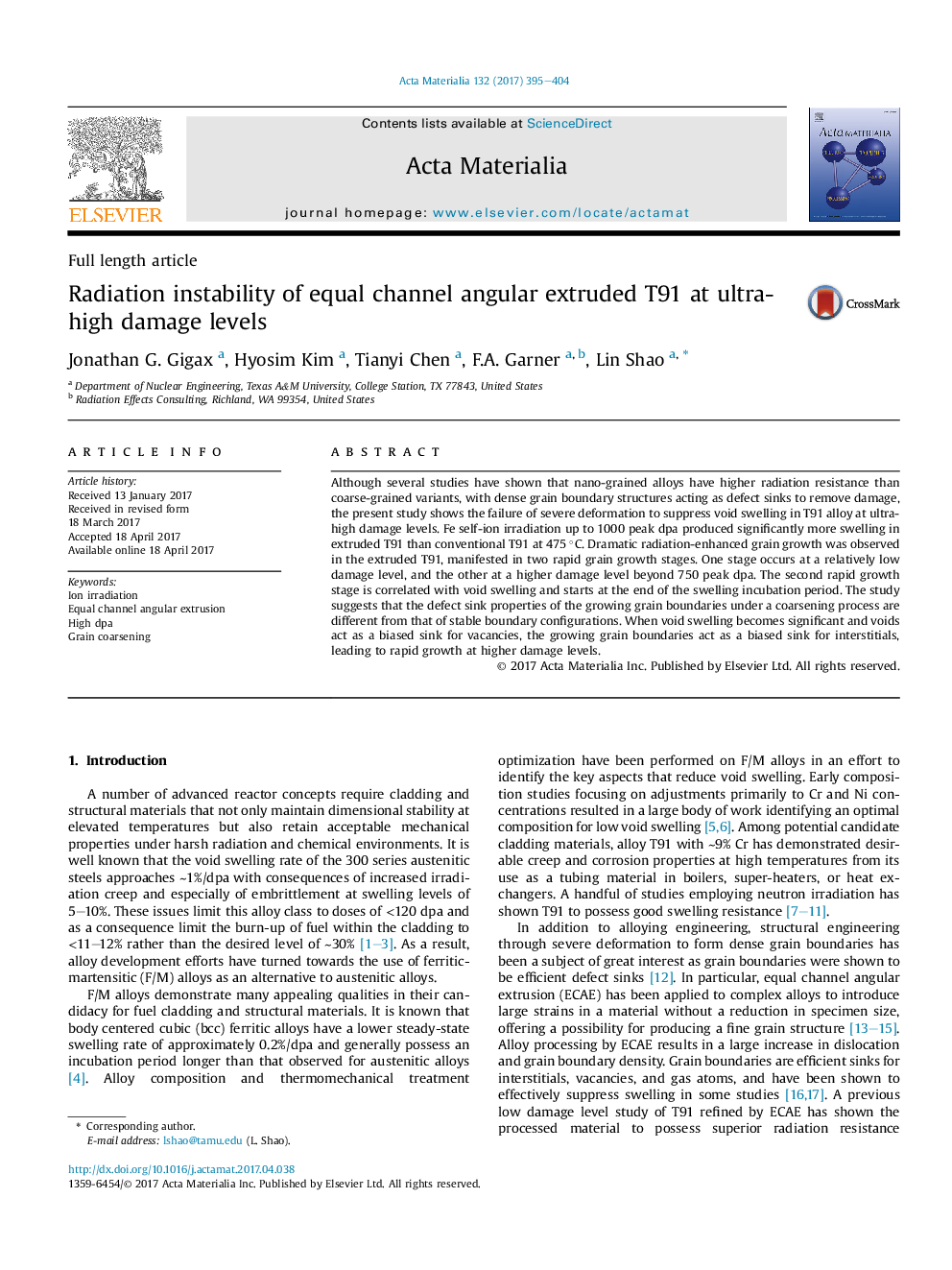| Article ID | Journal | Published Year | Pages | File Type |
|---|---|---|---|---|
| 5436174 | Acta Materialia | 2017 | 10 Pages |
Although several studies have shown that nano-grained alloys have higher radiation resistance than coarse-grained variants, with dense grain boundary structures acting as defect sinks to remove damage, the present study shows the failure of severe deformation to suppress void swelling in T91 alloy at ultra-high damage levels. Fe self-ion irradiation up to 1000 peak dpa produced significantly more swelling in extruded T91 than conventional T91 at 475 °C. Dramatic radiation-enhanced grain growth was observed in the extruded T91, manifested in two rapid grain growth stages. One stage occurs at a relatively low damage level, and the other at a higher damage level beyond 750 peak dpa. The second rapid growth stage is correlated with void swelling and starts at the end of the swelling incubation period. The study suggests that the defect sink properties of the growing grain boundaries under a coarsening process are different from that of stable boundary configurations. When void swelling becomes significant and voids act as a biased sink for vacancies, the growing grain boundaries act as a biased sink for interstitials, leading to rapid growth at higher damage levels.
